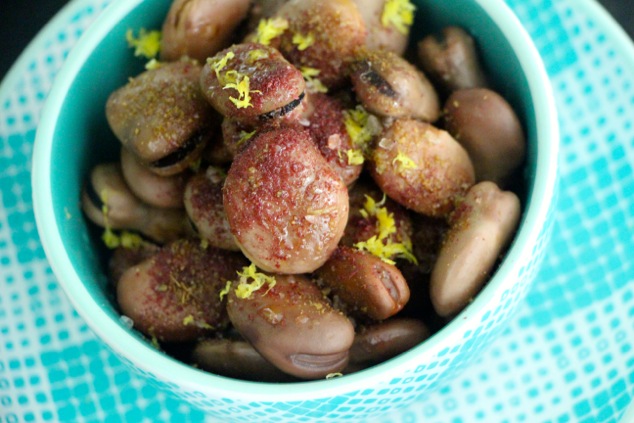 This Tunisian classic was on my Savta’s table during several holidays and family gatherings. It is usually served as an opening dish or a side dish along with other Tunisian salads and dishes. It fits perfectly with the Tunisian cuisine philosophy of a meze type eating experience ( at least as a first step 🙂 ). This dish also allows you to enjoy classic spices combo of Tunisian flavors.
This Tunisian classic was on my Savta’s table during several holidays and family gatherings. It is usually served as an opening dish or a side dish along with other Tunisian salads and dishes. It fits perfectly with the Tunisian cuisine philosophy of a meze type eating experience ( at least as a first step 🙂 ). This dish also allows you to enjoy classic spices combo of Tunisian flavors.
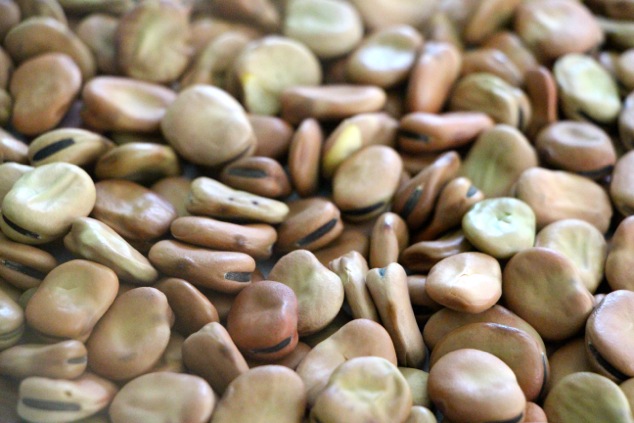 Fava Beans are called “Ful” in Tunisian, Hebrew and Arabic and are also known as broad beans (“fava” means “broad” in Italian).
Fava Beans are called “Ful” in Tunisian, Hebrew and Arabic and are also known as broad beans (“fava” means “broad” in Italian).
Fun Fava Fact 🙂 or “Ful” Fact:
In this dish it is all about the wonderful flavors of Lemon, Cumin, Sumac and Salt; the fava beans highlight the brilliant spice combination. On Rosh Hashanah, the Jewish New Year, this dish is also one of the “Simanim” – symbolic dish that comes with a special blessing for the new year. Like the other “Simanim”, the blessing is based on a ‘play on word’; The Hebrew word for fava beans is “Ful” and it is similar in sound to the word that means “to fall”. On the new year we wish for the fall of the ones who wish us harm.
יהִי רָצֹון מִלְפָנֶיךָ ה’ אֱלֹהֵינּו ואלֹהֵי אֲבֹותֵינּו שֶיפולו שנאינו לפנינו
Since the emphasis on Rosh HaShana is usually on sweet flavors, the Jewish Tunisian tradition is to serve this Fava bean dish without the spices or with the spice mix on the side.
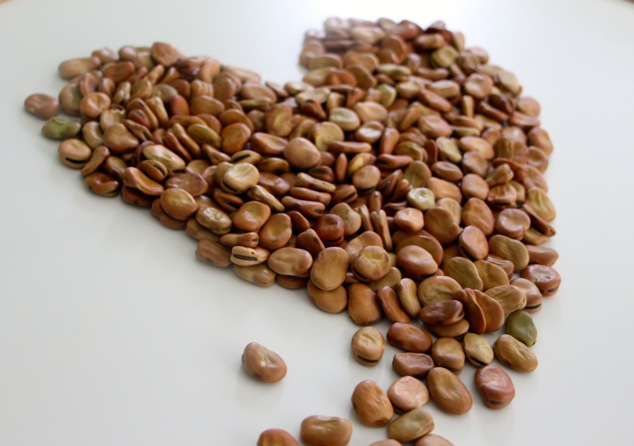 In Tunisian culture, Fava beans symbolize prosperity, plenty and wealth. I just LOVE the idea of a super simple dish with just a few inexpensive ingredients and an easy straightforward preparation that actually symbolizes prosperity, plenty and wealth. Just think about it – it is actually a clever, sophisticated idea and message.
In Tunisian culture, Fava beans symbolize prosperity, plenty and wealth. I just LOVE the idea of a super simple dish with just a few inexpensive ingredients and an easy straightforward preparation that actually symbolizes prosperity, plenty and wealth. Just think about it – it is actually a clever, sophisticated idea and message.
Please Remember:
When Fava beans are fresh, the whole bean can be eaten, but when using large dry fava beans, the outside bean case gets a little tough and so the way to eat it is to hold the bean, give it a bite so the inside soft part of the bean (and the spices around it) are eaten only. The bean case is left on the side of the plate or in a separate bowl. Kind of like eating sunflower seeds…
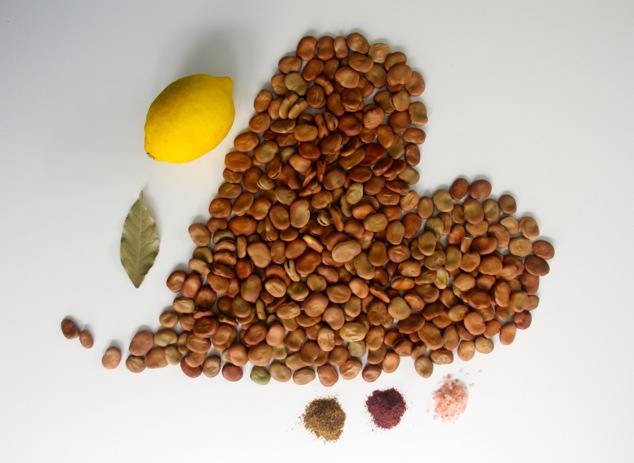 You will need:
You will need:
Dry Large Fava Beans
Lemon
Bay Leaf
For Plating:
Cumin
Sumac
Lemon Zest
Coarse Pink Salt
Olive Oil
Let’s do this!
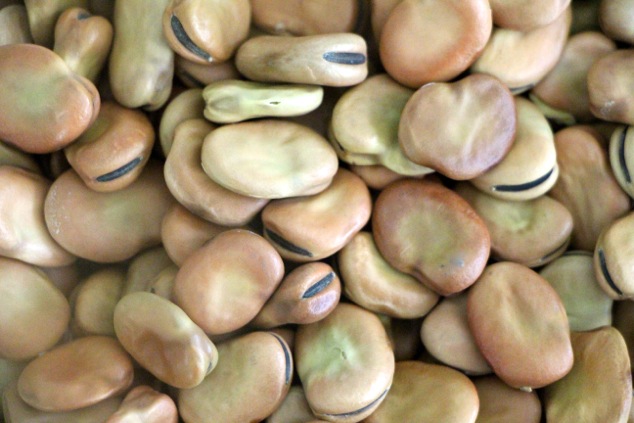 First, lets soak some beans 🙂
First, lets soak some beans 🙂
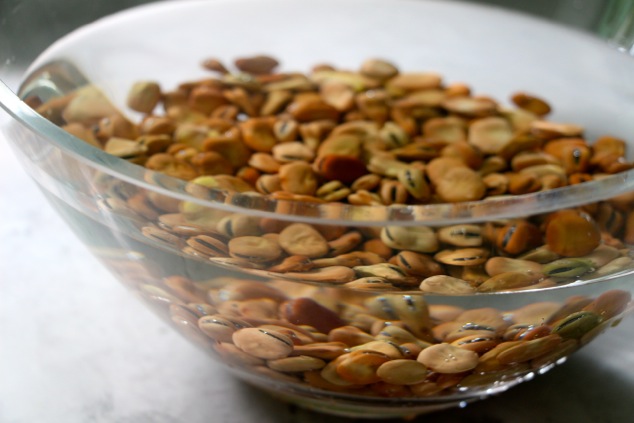 Wash the dry fava beans and soak in cold water overnight or for 8-10 hours.
Wash the dry fava beans and soak in cold water overnight or for 8-10 hours.
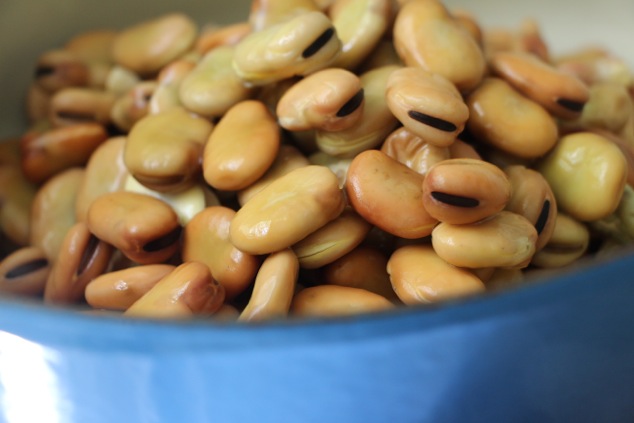 Strain the soaked fava beans and add to a large pot.
Strain the soaked fava beans and add to a large pot.
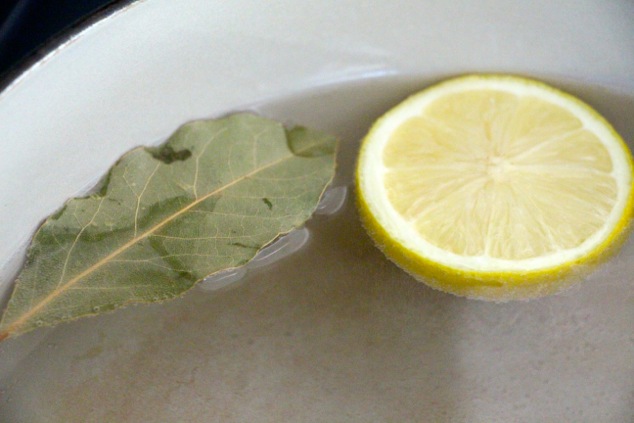 Fill the pot with water generously, add half a lemon and a bay leaf and bring the water to a boil.
Fill the pot with water generously, add half a lemon and a bay leaf and bring the water to a boil.
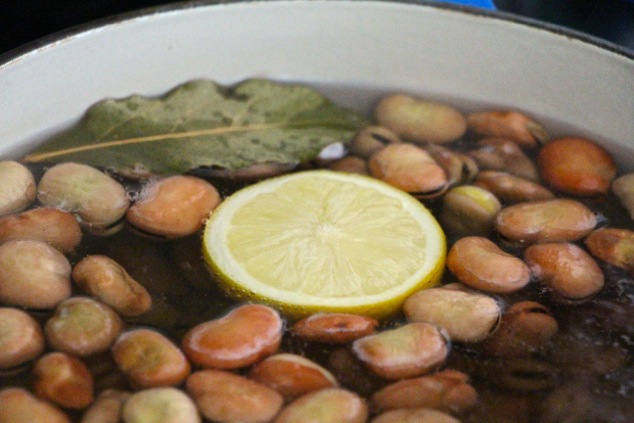
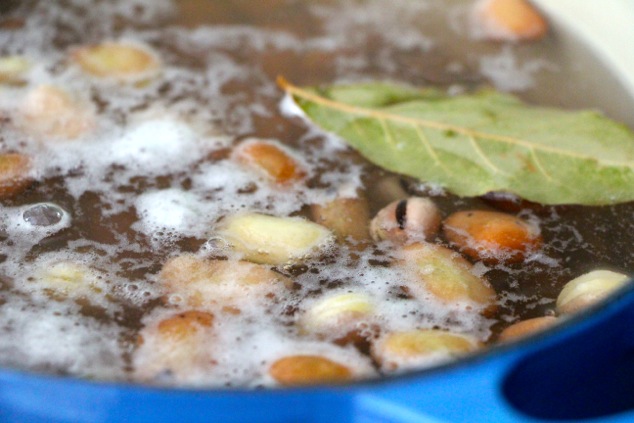 Allow boiling for five minutes and then reduce to medium heat and continue cooking for about 45-55 minutes keeping a lively simmer.
Allow boiling for five minutes and then reduce to medium heat and continue cooking for about 45-55 minutes keeping a lively simmer.
The beans are ready when they are tender and soft on the inside.
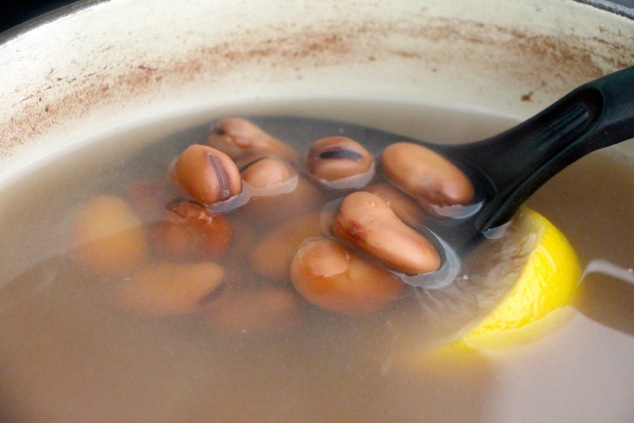 Keep the cooked fava beans in the water until you are ready to serve.
Keep the cooked fava beans in the water until you are ready to serve.
Ready to plate?
I like to serve this dish in individual small bowls.
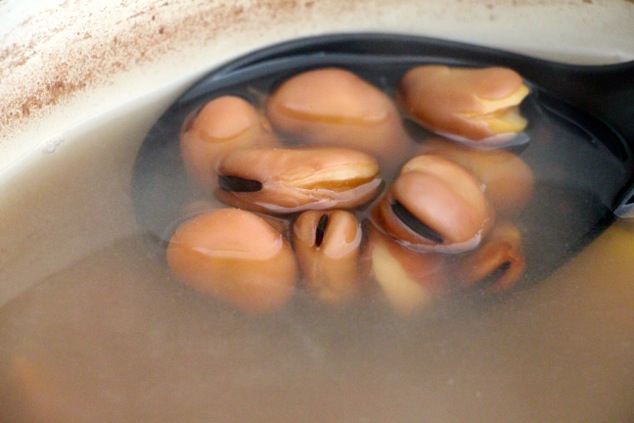 Strain the fava beans to the remove the water and place into the serving bowls and add freshly squeezed lemon juice.
Strain the fava beans to the remove the water and place into the serving bowls and add freshly squeezed lemon juice.
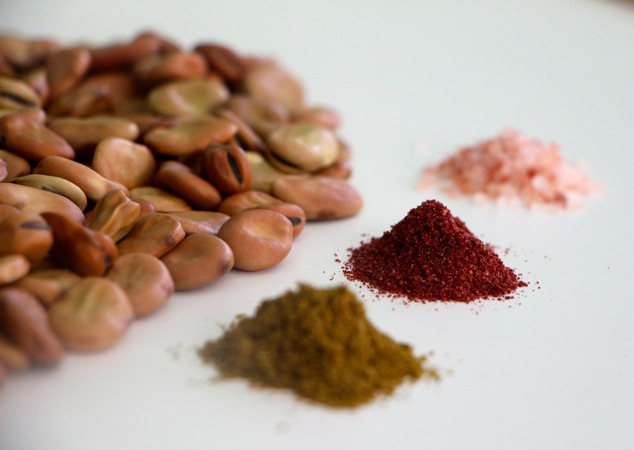 Sprinkle with cumin, sumac and coarse salt.
Sprinkle with cumin, sumac and coarse salt.
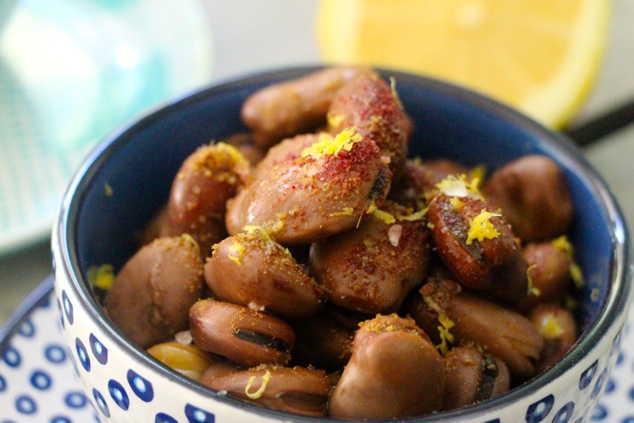
Finish with a little lemon zest and a drizzle of olive oil.
A little Tip:
You can soak a large amount of dry fava beans overnight, strain them well and freeze. Soaked fava bean can be store in the freezer for months and their taste actually get better with time.
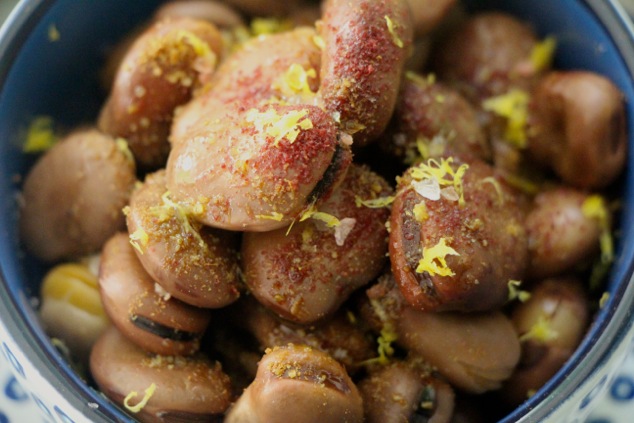 —————————————————————————-
—————————————————————————-
Quick Recipe:
Ful Bel’Kammun-
Soak the Fava beans in water over night (8-12 hours).
Strain Fava beans and add them to a large pot.
Add Water generously, half a Lemon and a Bay Leaf and bring the water to a boil.
Allow boiling for about 5 minutes.
Continue cooking for 45 minutes to an hour keeping a live simmer.
Keep the Fava Beans in the water until you are ready to serve.
Serve the Fava Beans warm and squeeze on fresh Lemon Juice.
Top with Cumin, Sumac, Coarse Salt and Lemon Zest.
Drizzle a little Olive Oil.

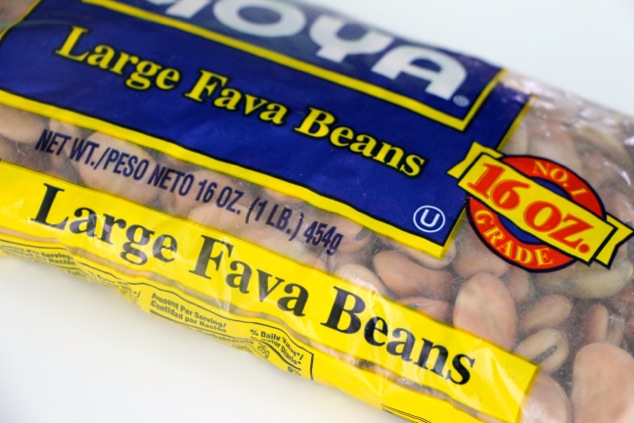
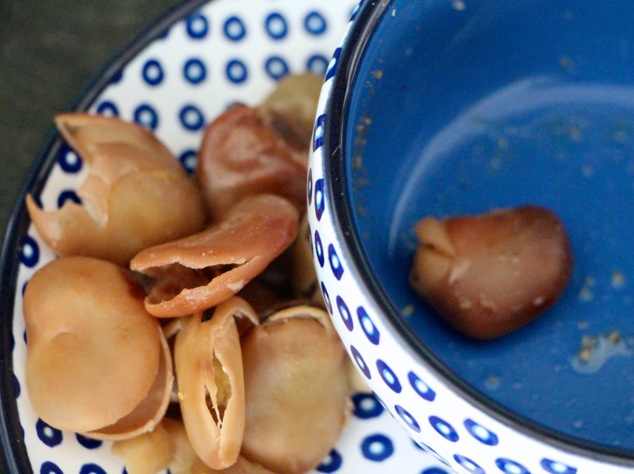
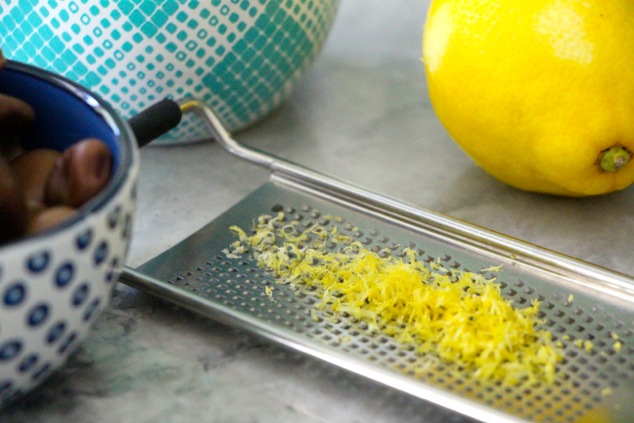
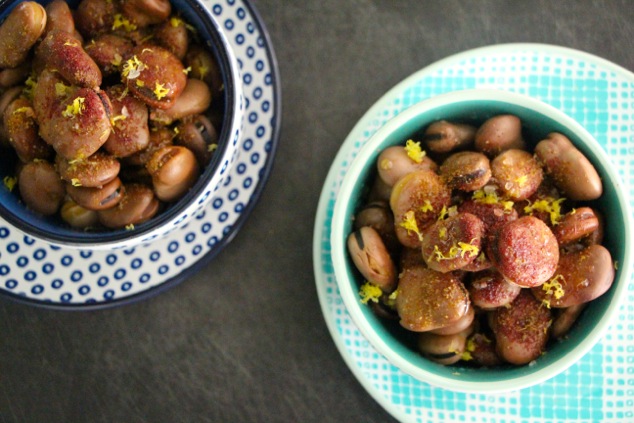
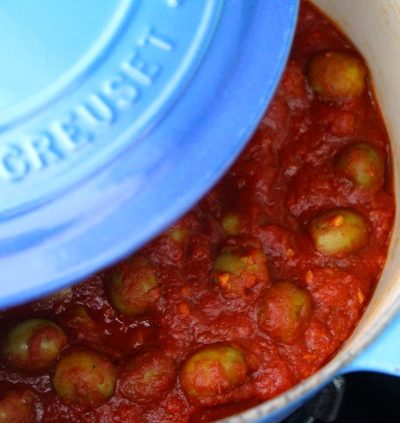
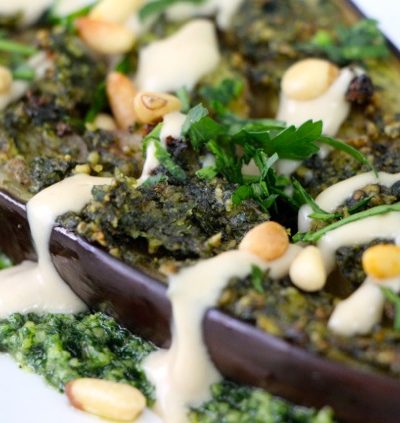
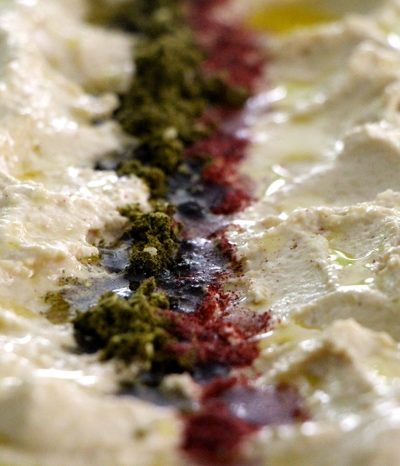
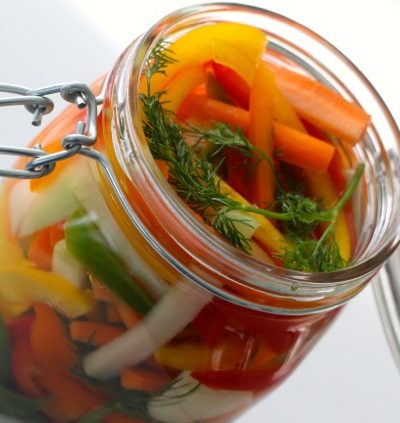
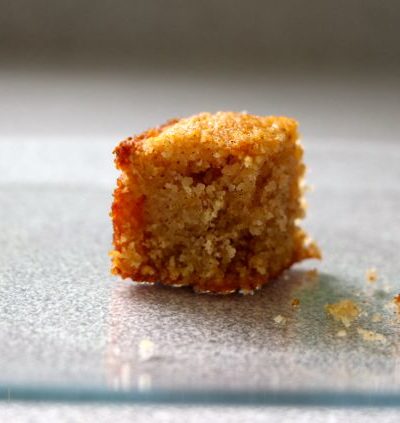
Wow amazing post. I am going to have my wife make these tonight!
Thank you! This one is so yummy and so simple; trust me, you can even make it yourself. 🙂